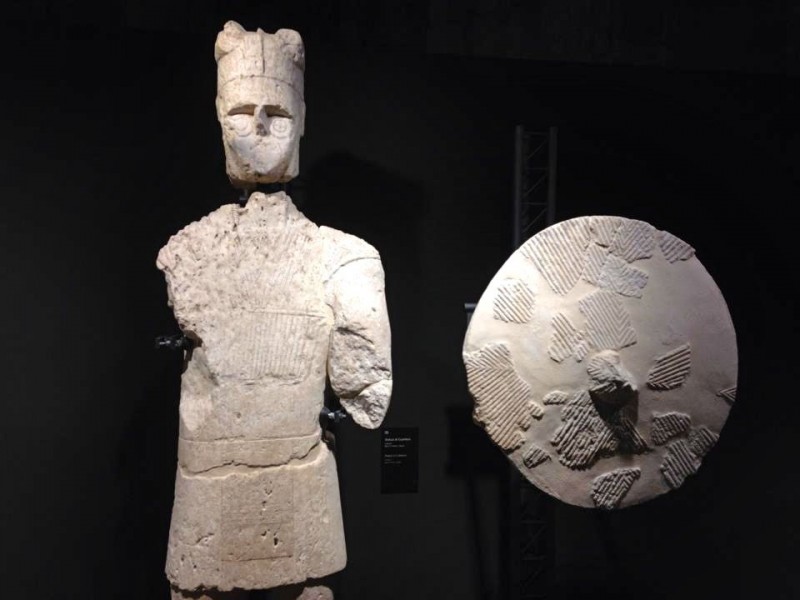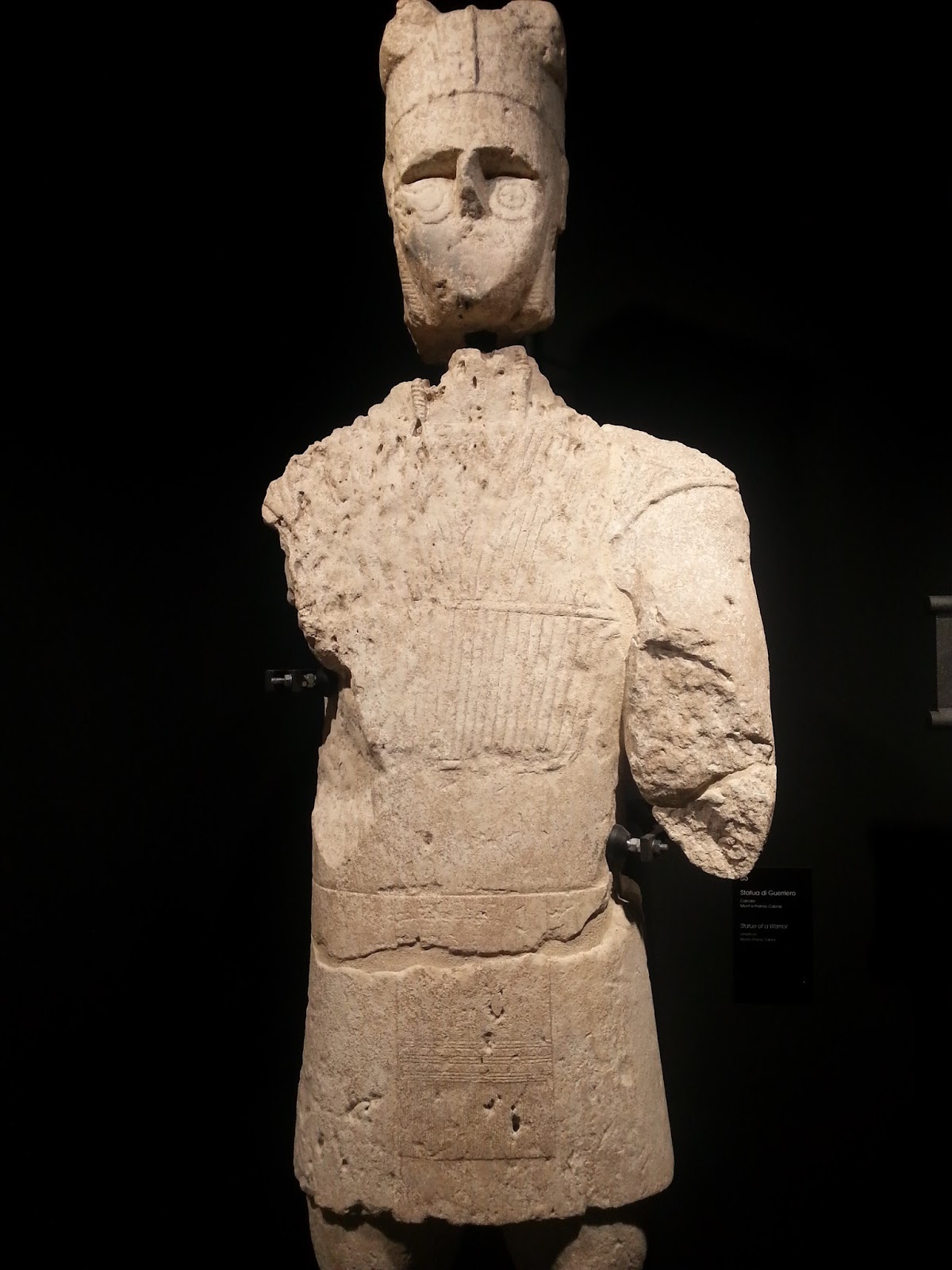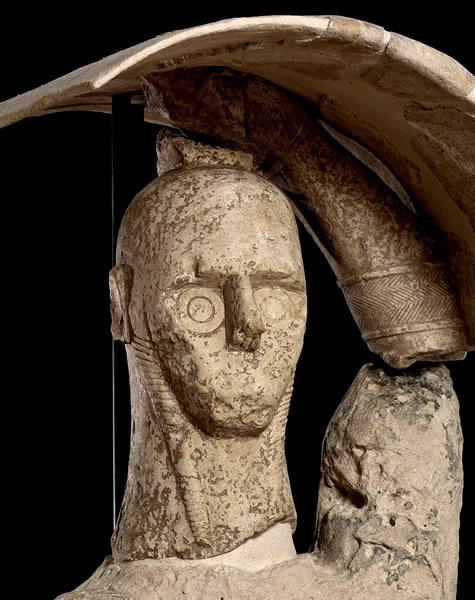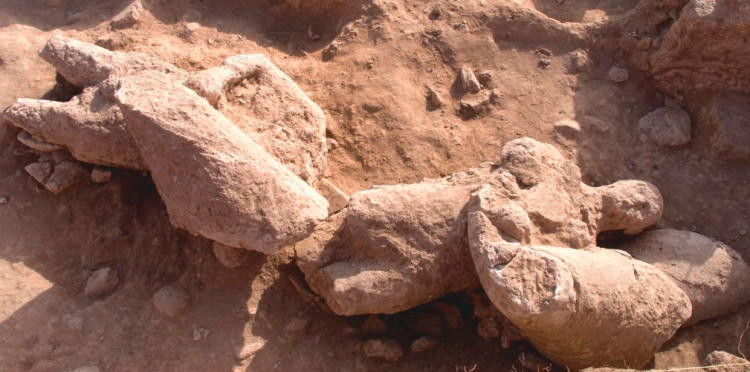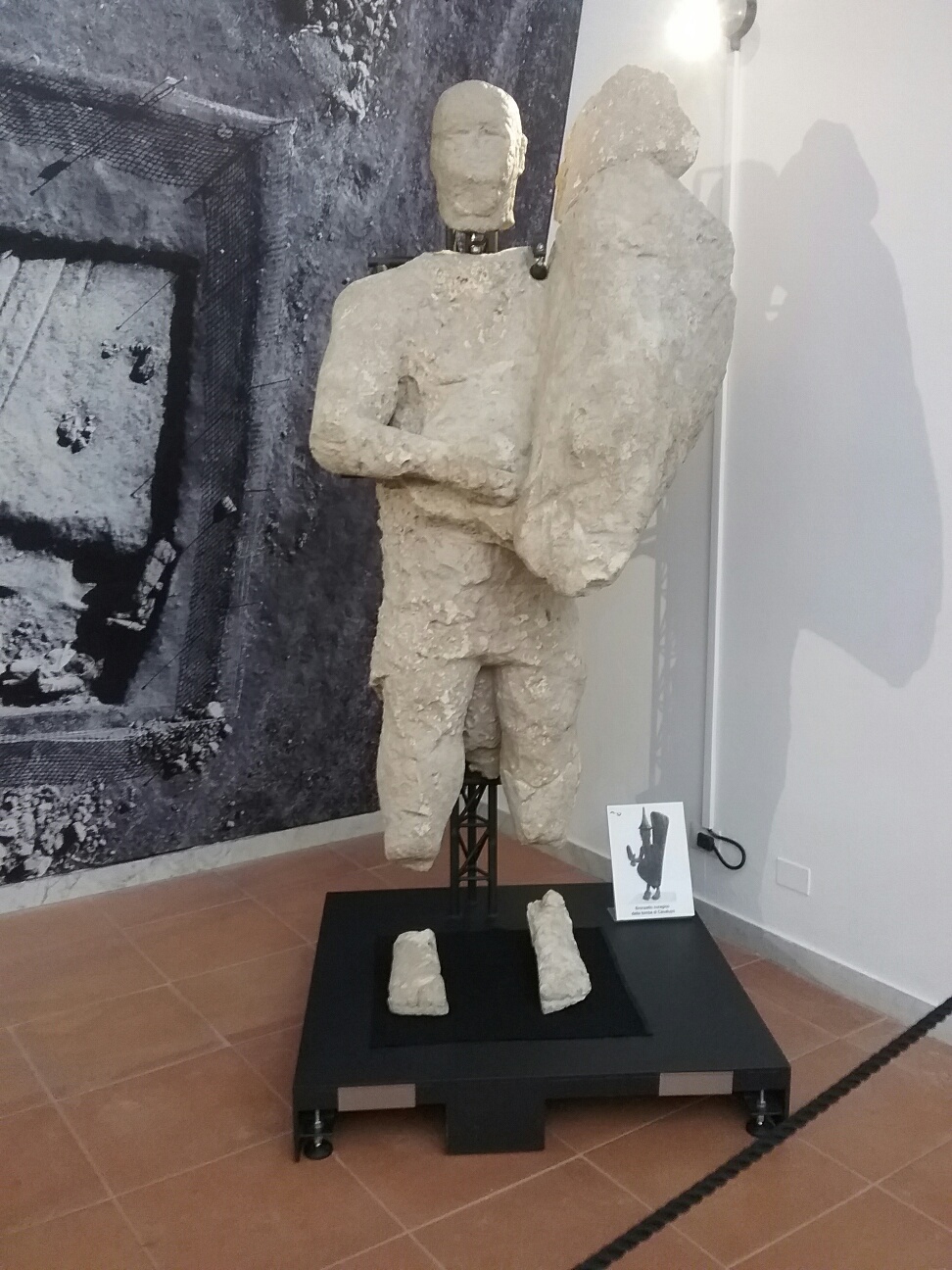In the 70s, Human sized antropomorphic statues were found in the site of Mont'e prama, Western Sardinia, the statues represent warriors, archers, boxers and other characters, namely two twins wearing a conical cap and an enormous shield, the statues vary in height, they are mostly between 2 and 2,5 meters tall, with the statues stone models of the "Nuraghi" were found, bronze age towers and palaces/keeps, similar models were already known from other Nuragic contexts, they were often located in the center of stone built roundhouses where archaeologists think the "parliament" of the community gathered.
In the same site of the statues, hundreds of burials were found, these "pit" burials were covered by a stone slab and the corpse was buried in a "fetal" position, archaeologists think the statues and the necropolis were linked, recent analysis of the corpses reveals they died between 1100 and 800 bc, the statues seem to have been made around that time, as confirmed by the find of the statues' fragments both inside the burials and in the pavement of Nuragic buildings dating to the IXth century bc.
Most of the dead were young, with strong bodies and signs of combat such as sword cuts are evident in their bones, indicating they were probably warriors, scientific analysis of the skeletons revealed they probably had a fish rich diet.
Most of the burials were not rich, with the exception of that of an individual buried with an Egyptians scarab dating to the new kingdom (1500-1050 bc) and other luxurious items.
The statues are unlike any other contemporary statue, they predate the Greek kuroi by at least two centuries, and they represent characters similar to those depicted in the smaller Sardinian bronze statuettes known as "bronzetti".
The two twins for instance, that were recently discovered in new excavations (2014) represent characters strikingly similar to the Nuragic bronze figurine found in a Villanovian tomb at Vulci dated to the IXth century bc.
The statues were put together from 5000 fragments in 2014 (not including the latest finds), before then they were not known to the public.
The statues are interesting both because of their age, which makes them the oldest human sized statues in the Mediterranean basin after the Egyptian ones, and because of their peculiar style.
The statues were not made to have realistic body proportions, but the details of the armor and decorations were carefully sculpted with great expertise, some details in the statues required the use of the grandine chisel according to scholars, which would mean that it was discovered here for the first time, long before the classical period.
The most recent notable find (2016) is that of a beautifully sculpted Nuraghe model with five towers.
The georadar has revealed the site covers at least 7 hectares and contains complex large buildings, large streets and probably other statues.
New excavations of the site are to begin now.
In the same site of the statues, hundreds of burials were found, these "pit" burials were covered by a stone slab and the corpse was buried in a "fetal" position, archaeologists think the statues and the necropolis were linked, recent analysis of the corpses reveals they died between 1100 and 800 bc, the statues seem to have been made around that time, as confirmed by the find of the statues' fragments both inside the burials and in the pavement of Nuragic buildings dating to the IXth century bc.
Most of the dead were young, with strong bodies and signs of combat such as sword cuts are evident in their bones, indicating they were probably warriors, scientific analysis of the skeletons revealed they probably had a fish rich diet.
Most of the burials were not rich, with the exception of that of an individual buried with an Egyptians scarab dating to the new kingdom (1500-1050 bc) and other luxurious items.
The statues are unlike any other contemporary statue, they predate the Greek kuroi by at least two centuries, and they represent characters similar to those depicted in the smaller Sardinian bronze statuettes known as "bronzetti".
The two twins for instance, that were recently discovered in new excavations (2014) represent characters strikingly similar to the Nuragic bronze figurine found in a Villanovian tomb at Vulci dated to the IXth century bc.
The statues were put together from 5000 fragments in 2014 (not including the latest finds), before then they were not known to the public.
The statues are interesting both because of their age, which makes them the oldest human sized statues in the Mediterranean basin after the Egyptian ones, and because of their peculiar style.
The statues were not made to have realistic body proportions, but the details of the armor and decorations were carefully sculpted with great expertise, some details in the statues required the use of the grandine chisel according to scholars, which would mean that it was discovered here for the first time, long before the classical period.
The most recent notable find (2016) is that of a beautifully sculpted Nuraghe model with five towers.
The georadar has revealed the site covers at least 7 hectares and contains complex large buildings, large streets and probably other statues.
New excavations of the site are to begin now.
Last edited:



